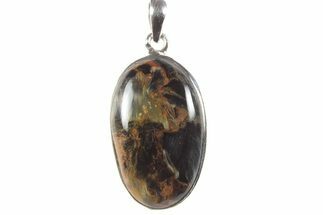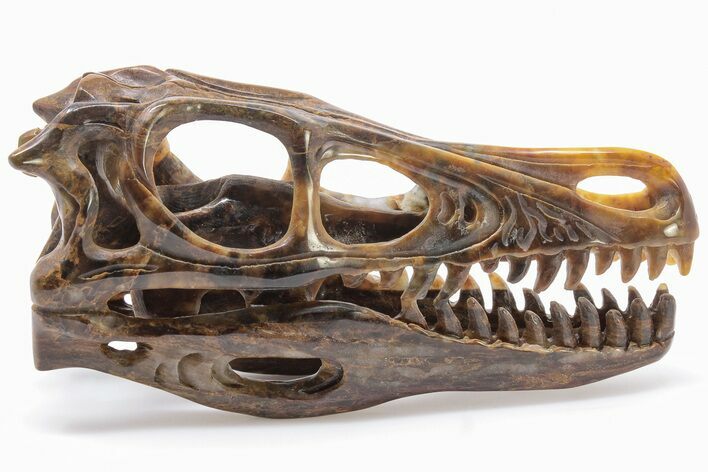This Specimen has been sold.
5" Carved Pietersite Dinosaur Skull - Very Chatoyant
As if raptors weren't already mind-boggling awesome enough, we decided to add a whole other layer of intrigue and fantasy. This is a wild piece that is sure to excite any collector and is destined to be the envy of your social circle. What we have for you is an exquisitely-crafted, polished, 5" long raptor skull that's meticulously carved from an association of pietersite and quartz. The contrast of the golden and green pietersite with the quartz adds intense visual intrigue to the specimen. Additionally, as you rotate the specimen a flashy chatoyant quality is observable. The opportunity to own a replica dinosaur skull is now easier than you could have imagined, and you can do it in style. This skull is insanely snazzy and easily looks at home in both an Indiana Jones film and on your mantle. An overall fun piece for the casual enthusiast or anyone that enjoys really cool display pieces. A jaw-snapping good time!
Pietersite is a variety of chalcedony that contains amphibole mineral fibers, resulting in a chatoyant effect similar to tiger's eye. It is found in a variety of colors including blue, grey, brown-red, brown, orange, and yellow. It is named after Sid Pieters, a mineral dealer from Namibia that documented the discovery of this variety of chalcedony.
About Quartz
Quartz is the name given to silicon dioxide (SiO2) and is the second most abundant mineral in the Earth's crust. Quartz crystals generally grow in silica-rich environments--usually igneous rocks or hydrothermal environments like geothermal waters--at temperatures between 100°C and 450°C, and usually under very high pressure. In either case, crystals will precipitate as temperatures cool, just as ice gradually forms when water freezes. Quartz veins are formed when open fissures are filled with hot water during the closing stages of mountain formation: these veins can be hundreds of millions of years old.
Quartz is the name given to silicon dioxide (SiO2) and is the second most abundant mineral in the Earth's crust. Quartz crystals generally grow in silica-rich environments--usually igneous rocks or hydrothermal environments like geothermal waters--at temperatures between 100°C and 450°C, and usually under very high pressure. In either case, crystals will precipitate as temperatures cool, just as ice gradually forms when water freezes. Quartz veins are formed when open fissures are filled with hot water during the closing stages of mountain formation: these veins can be hundreds of millions of years old.
 Reviews
Reviews


















